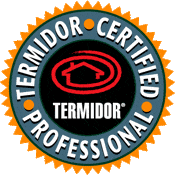Understanding the WDO Inspection
WHAT IS A WOOD DESTROYING ORGANISM AND HOW IT RELATES TO YOUR LENDER
Unlike most states, the Florida Department of Agriculture and Consumer Services (FDACS) requires the licensed WDO Inspector to report on Wood Destroying Organisms. Most states only require the reporting of Wood Destroying Insects. Quite frankly, very few inspectors and no property appraisers seem to get this right. I have found even FDACS personnel seem to have differing opinions on what constitutes a wood destroying organism even though FDACS clearly defines what constitutes an organism. To further compound this problem, lenders such as FHA and VA direct appraisers to report any evidence of water damage or wood rot as WDO. I might add, any appraiser who reports the presence of a Wood Destroying Organism is in violation of Florida law as the law requires the inspector to be licensed and insured to inspect/report on wood destroying organisms. To further compound this problem, we have many unscrupulous pest control companies who inaccurately report minor water damage as WDO for the purpose of selling termite treatment. Your first clue that you may be dealing with an unscrupulous pest control company is when they start placing bright sticky dots on your home indicating “hidden” moisture based on unreliable moisture readings from a cheap pinless moisture meter.
What constitutes a wood destroying organism? According to Section 3 of 5E-14.142(2)(c), “wood decaying fungi are fungi that can cause damage to wood such as those that produce white rot, brown rot, poria and cubical rot, but not surface molds that do not cause damage to sound wood. Damage and deterioration in structures caused by exposure to water and sunlight are not reportable on a WDO report. Examples of the above include delamination of wood veneer materials water stains, peeling, separation and other breakdown of cellulose materials (i.e., particle board and Masonite siding) where wood decay fungi are not present.”
What does this mean? Surface mold which is generally cladosporium or aspergillus is often reported as WDO, when it should not be. Delamination of plywood caused by moisture is reported as WDO, when it should not be. Water damaged wood trim such as fascia or window trim, in the absence of brown/white rot is reported as WDO, when it should not be. Fungi/mildew is reported as WDO, when in fact it should not be. Water damage to T-111 siding, Masonite soffit or cement based paneling is reported as WDO, when it should not be.
Reporting mold/fungi as a WDO. Unless the WDO inspector is trained in microscopy and identification of mold spores/cultures, there really is no way for the inspector to classify the mold as a wood destroying organism as you can not properly identify the mold. Mycologists will argue there are no “wood destroying molds” as molds are “wood inhabiting” rather than wood destroying.
Reporting water damage/mold as Damage. Many inspectors will report the presence of any water damage under Section 2(3) of the FDACS-13645 WDO Inspection Report form. I disagree with this practice as it is falsely reporting an organism when Chapter 5E clearly excludes it. It is my belief most WDO inspectors simply do not understand what constitutes an organism or they report it out of fear of being challenged/sued or it is reported as a basis to sell other treatment services. Personally, I think it is all three. While water damaged wood may provide materials “conducive to WDO/termites”, it is not actually damage caused by WDO and therefore, it should not be reportable as such.
The WDO Inspection is a guarantee. It is only a guarantee of something if the inspector provides language to that effect. The WDO inspection, as defined by the report form, offers no guarantee or warranty against future termites/WDO. It is based on the day/time of the inspection only. There is no guarantee against activity for any period of time after the inspection.
What do I do if the appraiser/inspector reports WDO and my loan will not close? While you may not have WDO, you should always strive to get the Seller to repair any water damaged wood. We understand, in some cases, this is just not possible, especially if it is a REO or As-Is property. While your WDO inspector must issue the FDACS-13645 report, they can also issue the NPMA-33 WDI report which is acceptable to HUD, FHA, VA and any national lender. The NPMA form only reports the presence of Wood Destroying Insects and does not include “organisms”. Generally, the licensed inspector’s report will override the opinion of an appraiser with the lender. The lender is exercising their right to protect themselves against a bad loan decision and all they need is a basis to prove due diligence was conducted. Again, the Florida WDO Inspector must issue the FDACS form but there is nothing to prevent them from also issuing the NPMA form as well.







